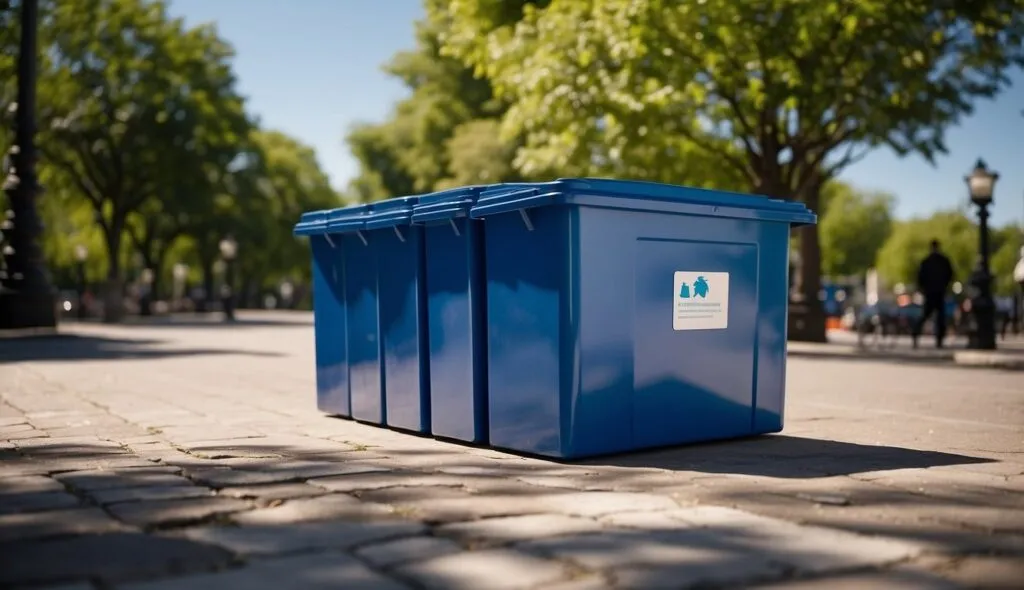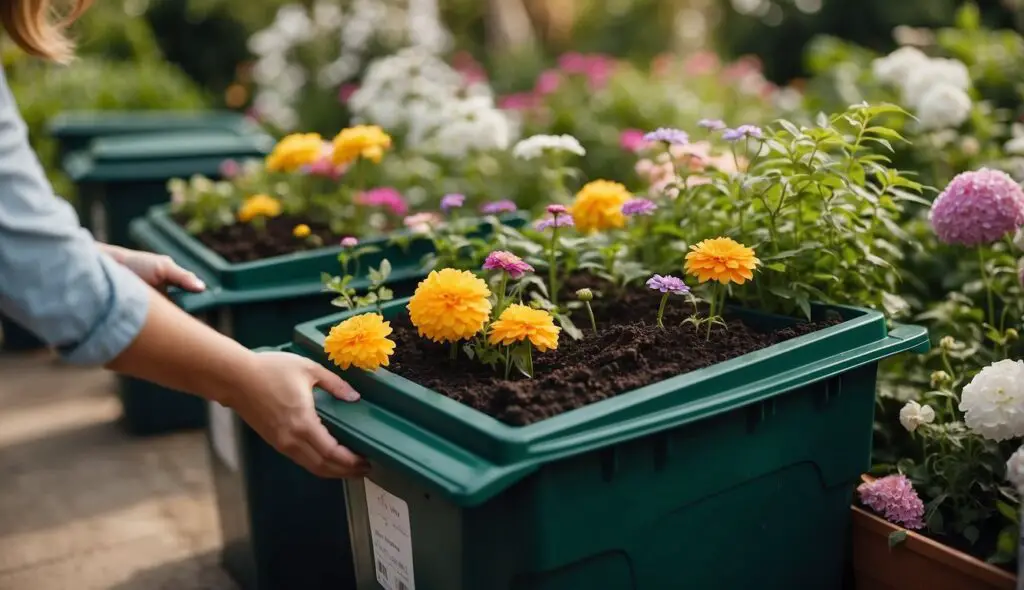Green space repurposing is an innovative way to revitalize urban environments and create sustainable spaces. The concept involves converting underutilized areas such as abandoned factories, vacant lots, and rooftops into green spaces that serve multiple purposes. This can include parks, community gardens, green roofs, and more.

Understanding urban green spaces is essential to creating sustainable and livable cities. Green infrastructure can help to mitigate the negative effects of urbanization such as air pollution, heat islands, and stormwater runoff. It also provides numerous benefits to residents such as improved mental and physical health, increased social interaction, and enhanced property values. By repurposing underutilized spaces, we can create more green infrastructure and help to transform our cities into more livable and sustainable places.
Table of Contents
Key Takeaways
- Green space repurposing is an innovative way to revitalize urban environments and create sustainable spaces.
- Urban green spaces provide numerous benefits to residents and can help to mitigate the negative effects of urbanization.
- By repurposing underutilized spaces, we can create more green infrastructure and help to transform our cities into more livable and sustainable places.
Understanding Urban Green Spaces

When we talk about urban green spaces, we refer to the open areas in cities that are covered by vegetation. These spaces include public parks, community gardens, and other green areas that are accessible to the general public. Urban green spaces are essential for the well-being of city residents as they provide a range of benefits, including social, environmental, and economic benefits.
Green spaces are not just about aesthetics. They play a vital role in the ecosystem and contribute to the overall health of the environment. They help to regulate the climate, improve air quality, and provide habitat for wildlife. Green spaces also provide a range of ecosystem services, such as water filtration, erosion control, and carbon sequestration.
In addition to the environmental benefits, urban green spaces also provide significant social benefits. They provide a place for people to relax and enjoy nature, which can help to reduce stress and improve mental health. Green spaces also provide opportunities for physical activity, which can help to improve physical health and reduce the risk of chronic diseases.
Urban green spaces can also provide economic benefits. They can increase property values, attract businesses, and create jobs. They can also help to reduce energy costs by providing shade and cooling the air.
However, not all urban areas have sufficient green space. In some areas, there is a lack of green space, and in others, the existing green spaces are underutilized. This is where repurposing vacant urban land comes in. By repurposing vacant land, we can create new green spaces and improve the existing ones. This can help to increase biodiversity, improve ecosystem services, and enhance the well-being of city residents.
Green infrastructure is an essential element of urban planning, and it is becoming increasingly important as cities grow and develop. By incorporating green infrastructure into urban planning, we can create more sustainable and livable cities.
The Role of Education in Sustainability
At the heart of the Green Space Repurposing movement is the belief that education is key to achieving long-term sustainability. We recognize that education plays a vital role in raising awareness about the importance of green infrastructure and its impact on the environment. Through our Green Space Based Learning (GSBL) model, we have developed a curriculum that integrates sustainability into grade-specific lessons for K-12 classrooms.
Our GSBL model is designed to provide an authentic research experience for teachers and their students. By contextualizing learning through practical applications of green infrastructure, we aim to increase green infrastructure awareness and encourage the adoption of sustainable practices. Through professional development opportunities, we equip teachers with the knowledge and tools they need to incorporate green infrastructure improvement projects into their educational environment.
The GSBL model is a collaborative effort between a Research I university, the surrounding underserved community, and local school districts. Through our federally funded Research Experience for Teachers (RET) program, we provide graduate students and teacher participants with the opportunity to engage in pedagogical practices that foster sustainable learning. Our professors work closely with teachers to develop lesson plans that align with state standards while incorporating green infrastructure concepts.
In conclusion, we believe that education is essential to achieving sustainability. Through our GSBL model, we are working to create a generation of environmentally conscious citizens who are equipped with the knowledge and skills to make a positive impact on the world.
Revitalizing Cities Through Green Initiatives
As urbanization continues to grow, cities are facing the challenge of repurposing vacant lots and deindustrialized areas to meet the needs of their citizens. One solution that has gained traction in recent years is the repurposing of these areas into green spaces, which can provide a range of benefits to urban neighborhoods.
Cities such as New York City and Washington, D.C. have already seen the benefits of repurposing former industrial areas into urban parks and green spaces. For example, New York City’s High Line is one example of how cities around the world are transforming former industrial sites into green spaces that attract millions of visitors each year [1].
Green initiatives have also been successful in revitalizing urban neighborhoods that have experienced urban decline. In Detroit, for instance, urban regeneration efforts have focused on repurposing vacant lots into community gardens and parks, which have helped to improve the quality of life for residents in those areas [2].
The development potential of green initiatives is significant, as they can provide numerous benefits to cities and their residents. These benefits include improved air and water quality, increased property values, and enhanced community engagement [3].
In conclusion, repurposing deindustrialized areas into green spaces can provide a range of benefits to urban neighborhoods, and cities should consider these initiatives as a viable solution to meet the needs of their citizens. By working together, we can create sustainable and thriving communities that benefit us all.
[1] https://www.weforum.org/agenda/2019/11/new-york-tel-aviv-ruhr-industrial-land-green-space-regeneration/
[2] https://www.curbed.com/2017/6/21/15845466/detroit-urban-gardens-photos
[3] https://www.researchgate.net/publication/259037216_The_Development_Potential_of_Urban_Green_Spaces_A_Spatial_Probit_Model_of_Residential_Property_Values_in_Greenville_South_Carolina
Design and Development of Sustainable Spaces
At the heart of repurposing green space is the design and development of sustainable spaces. Our focus is on creating spaces that prioritize environmental stewardship, resource efficiency, and human well-being. This approach involves the integration of nature into the built environment, which is not only aesthetically pleasing but also offers numerous benefits to society.
One example of sustainable design is the High Line in New York City. This former elevated railway was transformed into a public park that spans over a mile and a half. The High Line serves as a prime example of how repurposing can transform a once industrial area into a beautiful and sustainable green space.
In addition to repurposing, we also focus on designing green infrastructure that can help mitigate the effects of climate change. This includes the development of public spaces such as parks, gardens, and boulevards that allow citizens to be exposed to nature and enjoy the mental and physical benefits.
Our design/build process also involves the repurposing of factories and warehouses into sustainable spaces. This not only reduces waste but also provides new opportunities for real estate development. By repurposing these spaces, we can create sustainable communities that are both environmentally friendly and economically viable.
Technology plays a vital role in the design and development of sustainable spaces. We use cutting-edge technology to create green spaces that are energy-efficient, water-efficient, and waste-efficient. This includes the use of smart irrigation systems, energy-efficient lighting, and sustainable building materials.
In conclusion, designing and developing sustainable spaces is essential for creating a greener and more sustainable future. By repurposing existing spaces, designing green infrastructure, and utilizing technology, we can create sustainable communities that benefit both people and the planet.
Conclusion

In conclusion, repurposing green spaces in urban areas is a sustainable and cost-effective solution that can provide numerous benefits to communities. Our evaluation of the available research has shown that repurposing green spaces can lead to a positive return on investment, while also promoting environmental sustainability and community engagement.
Moreover, green spaces have been shown to have a positive impact on mental health and well-being, providing a space for activities and social cohesion. By repurposing vacant lots, we can create safe and beautiful spaces for communities to gather, exercise, and enjoy the outdoors.
However, it is important to note that the success of green space repurposing projects relies heavily on community engagement and involvement. In order to ensure the long-term sustainability of these projects, it is crucial to involve community members in the planning and implementation process.
Overall, we believe that repurposing green spaces is a powerful tool for promoting sustainability, health, and community engagement. By investing in these projects, we can create vibrant and thriving communities that benefit us all.
Frequently Asked Questions

What are the best practices for converting urban areas into green spaces?
When converting urban areas into green spaces, it is important to prioritize sustainability and community involvement. This includes conducting thorough research and analysis of the area to determine the best use of the space and the types of plants that will thrive there. It is also important to involve the local community in the planning and implementation process to ensure that the green space meets their needs and desires.
How can community involvement be effectively integrated into green space projects?
Community involvement can be effectively integrated into green space projects by engaging with local residents and organizations from the beginning of the planning process. This can include holding public meetings and workshops to gather input and feedback, as well as forming partnerships with community groups to help with the design and implementation of the green space.
What are the environmental benefits of repurposing land for green space?
Repurposing land for green space can have a number of environmental benefits, including improving air and water quality, reducing the urban heat island effect, and providing habitat for local wildlife. Green spaces can also help to mitigate the effects of climate change by sequestering carbon dioxide and reducing the amount of energy needed to cool buildings.
How can cities ensure the sustainability of newly created green spaces?
Cities can ensure the sustainability of newly created green spaces by implementing sustainable design practices and using environmentally-friendly materials. This includes using native plants that require less water and maintenance, as well as incorporating features such as rain gardens and permeable paving to reduce runoff and improve water quality. It is also important to establish a maintenance plan to ensure that the green space remains healthy and attractive over time.
What challenges do cities face when repurposing industrial sites into parks?
Cities may face a number of challenges when repurposing industrial sites into parks, including contamination from hazardous materials, limited access to water and other resources, and the need for extensive site remediation. It can also be difficult to balance the preservation of historic structures and features with the need to create a functional and attractive green space.
How does the repurposing of land for green spaces impact local biodiversity?
The repurposing of land for green spaces can have a positive impact on local biodiversity by providing habitat for a variety of plant and animal species. However, it is important to carefully consider the types of plants and landscaping used in the green space to ensure that they are appropriate for the local ecosystem and do not negatively impact existing wildlife populations.


